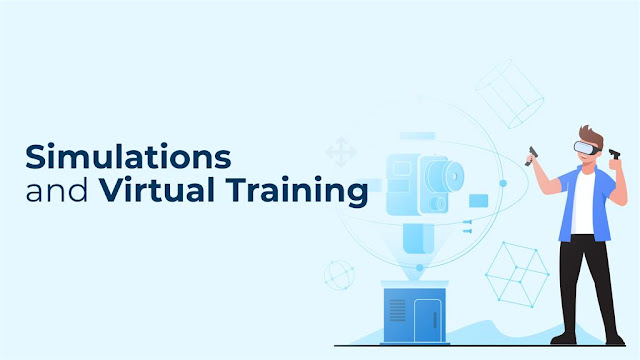SIMULATIONS AND VIRTUAL TRAINING: A FUTURISTIC ASPECTS
Learners are increasingly using online training simulations to put their skills to the test and apply what they’ve learned in the classroom to real-world situations. They also enable children to learn from their mistakes without suffering unwanted consequences. As a result, eLearning professionals and their consumers prefer these interactive online training solutions.
It’s becoming increasingly vital to distinguish between virtual modalities as we apply new technology in simulation education. Virtual simulation is a word that is occasionally used to refer to a wide range of simulation-based experiences, ranging from screen-based platforms to fully immersive virtual reality. One of the most appealing features of online training simulations is that they accurately simulate real-life emotions.
Augmented Reality
The fundamental attraction of Augmented Reality digital learning is the interactive experience. By engaging learners’ visual and auditory senses, augmented reality tries to replicate a real-world experience in the digital environment.
Virtual reality
Virtual reality-enabled learning environments allow students to interact with the learning environment. Learners are given virtual learning glasses or head mounted displays to simulate real-world events. When teaching in a real environment isn’t possible, VR learning comes in handy. The key distinction between AR and VR learning is that AR can be accessed via a smartphone, whereas VR instruction requires a headgear device.
Simulation
The use of software and tools to enhance the learning process is referred to as simulation learning. A simulated environment is a safe environment that simulates real-world events. It is currently widely used in corporate training for skill development.
Blended learning:
It provides learners the most effective of worlds. It uses on-line and offline technologies in tandem. Learners meet during a physical room whereas conjointly learning through online interactive sessions. They get a chance to learn from both online and classroom settings while not having to easily hear or watch academic content in a passive mode.
Simulations and virtual training sessions:
Automation and Artificial Intelligence (AI) have changed the business landscape in more ways than one. As a result, there is an increased demand for technological and higher cognitive workforce skills in organizations. Virtual flights and technique reproductions in valid climate conditions permitted an abundance of illustrations to be learned. The pilot training program, comprising of five screens organized around the cockpit, set the two pilots ready for a 25-hour flight, completely prepared and lashed in as they would be actually. The enthusiastic effect that test system preparing has on diggers assists them with turning out to be more mindful and careful while completing hazardous obligations. This was only an illustration of how VR demonstrates valuable in the mining business. The advantages of involving VR and reenactment in a scope of circumstances and enterprises are referenced beneath:
“Mark Zuckerberg, the Co-founder and CEO Facebook, said that he is pretty confident about Virtual Reality emerging as an important technology. Virtual reality will emerge to hold a prominent place in today’s world with several areas of application. In the next five years, Zuckerberg aims to transform Facebook into a metaverse company.”
Training Methods in Future:
Companies need to rethink their approach towards training to harness the new technologies to their full effect. Employees learn best only when they receive real time feedback. Adapting to new technologies can be difficult with the same old traditional training methods. Simulation and Virtual reality (VR) are the future of training and can be used for a wide range of applications including soft skills training and procedural training.
- Retraining
- Evolve education systems and training methods
- Rethink transition support
The pandemic situation compelled everyone to work remotely which led to challenges in several areas of operations including training employees. But most companies resorted to technology to address this issue and kept going uninterrupted even in the midst of a serious crisis. VR was one of the most relied upon technologies during the pandemic for training purposes, especially to develop soft skills and leadership qualities.VR has successfully reduced the total time required for training for many organizations.
source: https://www.maharishiuniversity.ac.in/simulations-and-virtual-training-a-futuristic-aspects/



Comments
Post a Comment